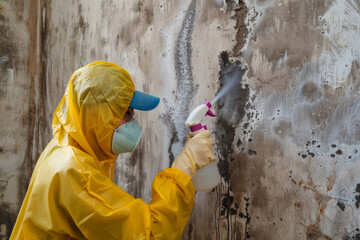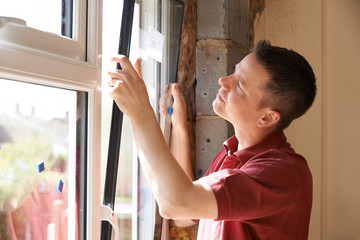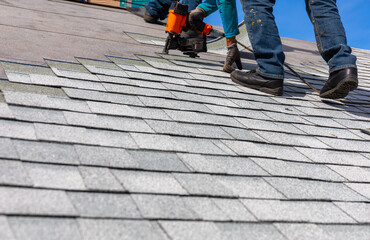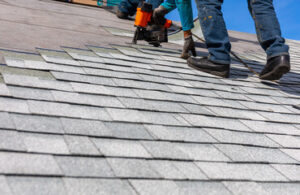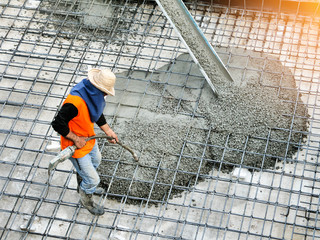As your home’s primary defense against the elements, a well-maintained roof can prevent damage and structural compromise. But even minor wear and tear can deteriorate over time, leading to a host of issues.
The most common roofing problems are leaks and moisture damage. Here are some Residential Roof Repair Las Vegas techniques to prevent these issues.
A roof is a complex system of interconnected parts. Damage to any part can have significant consequences for the whole, so addressing even minor issues as soon as possible is essential for maintaining your home’s safety and performance. This is especially true for damaged shingles or tiles, which can be among the most difficult and dangerous to repair.
Despite being highly durable and designed to withstand a lot of wear and tear, shingles are not infallible. High winds, falling debris, and other factors can cause shingles to become loose or even tear off altogether. Once this happens, the underlayment of the roof is exposed and the integrity of the structure deteriorates rapidly.
When a shingle is damaged, it can allow water to penetrate the roof and lead to a variety of problems, including wood rot, leaks, and mold growth. This is why it is important to replace any shingles that are broken, damaged, or missing as soon as possible.
While a single damaged shingle may seem like an easy fix, it is best to have a professional inspect the rest of the roof before attempting to make repairs. The underlying problem may be more extensive than it appears, and repairing isolated damage can end up costing more than replacing the entire roof.
If you decide to make the repairs yourself, it is important to work on a clear afternoon when the sun is not directly overhead. This will keep you safer and help you stay hydrated as you work in extreme heat. It is also a good idea to wear slip-resistant shoes and to use a ladder that is properly secured.
Start by positioning a flat pry bar underneath the shingle directly above the damaged one. Then, gently lift this shingle to reveal the nails that secure it. Remove the damaged shingle and replace it with a new one, being sure to nail it through both the undamaged shingles and the tar strip on top. Once the shingle is in place, you can replace the nails that were removed from the old shingle and seal the holes with a rubber sealant.
Leaks
Leaks and moisture damage are among the most serious roof issues affecting homeowners. If left unchecked, the problem can cause extensive and costly water infiltration into the interior of a home. The good news is that leaks can be prevented with regular inspections and prompt repairs.
Even the best roofing materials will show signs of wear over time, and addressing these issues promptly is the best way to protect your investment and keep moisture damage from occurring. Taking steps to prevent leaks includes making sure attic vents are properly sealed and examining flashing around chimneys, vents, and skylights to ensure there are no gaps or cracks.
In addition, regular gutter cleaning is essential to preventing leaks from clogged gutters. A clogged gutter can result in the backing up of water against your roof, which will eventually erode and crack shingles and lead to a leaking roof.
Another common cause of leaks is poor ventilation. Keeping your attic well ventilated will help regulate temperature and humidity levels, which will decrease the likelihood of ice dams and other problems that can lead to leaks.
Water stains on the ceiling near vent areas may indicate that the vents are leaking and require repair. This type of leak can be caused by a number of things, including broken or missing shingles, loose or damaged caulking, or deteriorated roof flashing. The best thing to do is to have the area professionally inspected and, depending on the root cause of the leak, it could involve replacing shingles, flashing, or vents.
Leaks around fireplaces and other roof penetrations can also occur due to a lack of proper maintenance or aging of the shingles. A professional roofer can inspect your roof and recommend the right course of action, which may include repairing or replacing the shingle as well as resealing any penetration points with roofing cement or sealant.
If you’re worried about the state of your roof, our Roof Maxx service can rejuvenate aging shingles and restore their waterproof properties, which may extend the life of your roof by up to 15 years or prevent the need for a full replacement.
Fascia Board
Fascia boards are a critical component in roof structure that offers protection against weather and vermin. They are mounted at the lower edge of a roof and work in tandem with soffits to keep out moisture, pests, and rain. They prevent the rafters and trusses from rotting and support the bottom row of shingles or tiles, preventing water from seeping under them. They also help to direct gutters away from the house and minimize moisture damage.
As a result, they are an essential part of the entire roofing system and must be taken care of. When not properly maintained, fascia boards can rot or be infested with mold, which will allow moisture to seep into the roof, causing further problems. If you have any signs of rot or mold, it is important to contact a professional as soon as possible.
Although wood is the most popular material for fascia, it is not as effective at preventing moisture damage, so other options are becoming increasingly popular. These include PVC, vinyl, and aluminum. These are all durable materials that can withstand the elements, and they can also be painted to match the rest of the house. These alternatives are a good choice for people who want to add an attractive finish to their home’s exterior without having to worry about rot or mold.
Another sign that you need to replace your fascia boards is the presence of animal marks. If you notice claw marks or chewed-up bits of wood, it’s time to call a roofer as soon as possible because those fascia boards can’t do their job anymore.
If you have any gutter fasteners on your fascia boards, these are another area where you should look for signs of rot or moisture. If the gutter fasteners are loose or falling off, this means that the fascia is leaking and that it should be replaced immediately.
The gutters themselves collect and channel rainwater from the roof to avoid excess moisture, but if they are clogged with debris or covered in ice, they cannot function as they should. They will need to be cleaned or replaced as soon as possible to minimize water damage to the roof and the surrounding property.
Gutters
Gutters are narrow channels installed along the edge of a roof to collect and redirect rainwater. They prevent water from pooling on the roof, which can cause rot and lead to costly damage. They also help keep water away from the home’s foundation, preventing mold and mildew growth as well as structural damage. Gutters are a crucial part of any roofing system, and it is important to have them properly installed and maintained.
Without gutters, water would simply cascade down the roof and gather at the base of the structure, which can erode soil and damage the foundation and walls. However, gutters trough the runoff water and direct it into downspouts, which drain the excess moisture away from the foundation, walls, and landscaping. This reduces the risk of basement flooding and protects against wood rot, which can cause extensive structural problems and expensive repair bills.
However, if gutters are clogged or improperly pitched, they can overflow and splash back onto the roof, siding, and fascia board. This can accelerate wear and tear on roofing materials and create a breeding ground for harmful mold and mildew. Additionally, water and debris that builds up on the roof can lift shingles and cause leaks. It’s crucial to have the gutters and downspouts cleaned and repaired as soon as you notice any issues.
Keeping your roof in good condition will not only help extend its lifespan but can also increase your property value and make it more attractive to potential buyers. In addition, replacing your gutters is a low-cost solution that can help prevent the costlier repair bills that come with water penetration and other damage caused by faulty guttering. Talk to the professionals to discuss your roofing needs and schedule a free estimate for a new roof or gutter replacement today! We are an established and reputable roofing contractor with a proven track record of quality craftsmanship, customer service, and reliability. We take pride in the work we do, and we are committed to providing our clients with the best experience possible.


